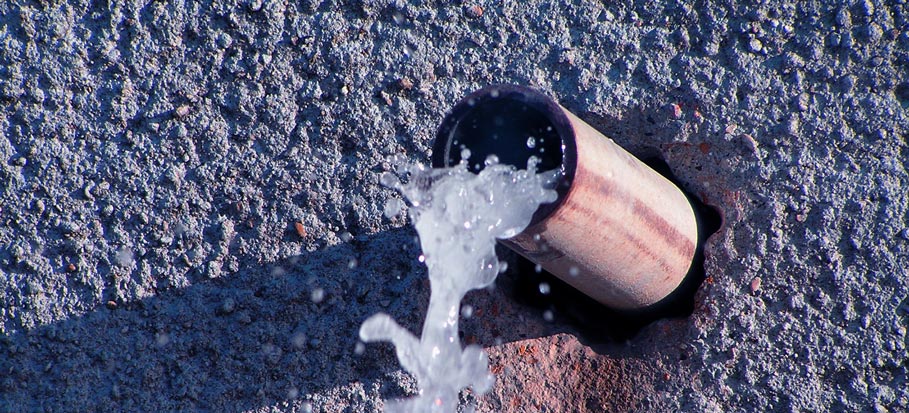Six Effective Ways to Identify Covert Water Line Leaks Stealthily
Six Effective Ways to Identify Covert Water Line Leaks Stealthily
Blog Article
Are you currently hunting for advise around Hacks to detect leaks?

Early discovery of leaking water lines can reduce a potential catastrophe. Aside from conserving you money, it will lessen the stress and disappointment. The moment you discover a leak, calling your plumber for repairs is the very best option. Nonetheless, some tiny water leakages may not show up. Below are some hacks that aid if you can not detect it with your nude eyes.
1. Take A Look At the Water Meter
Inspecting it is a guaranteed way that helps you uncover leakages. If it moves, that indicates a fast-moving leak. This suggests you might have a slow leak that could even be underground.
2. Inspect Water Usage
If you find sudden modifications, in spite of your consumption being the same, it implies that you have leaks in your plumbing system. An abrupt spike in your expense suggests a fast-moving leak.
A steady boost every month, also with the exact same routines, reveals you have a slow-moving leak that's also slowly intensifying. Call a plumber to thoroughly check your building, specifically if you feel a warm location on your flooring with piping below.
3. Do a Food Coloring Examination
When it involves water usage, 30% originates from commodes. Test to see if they are running properly. Decrease flecks of food color in the tank and wait 10 mins. There's a leakage between the storage tank and also dish if the shade somehow infiltrates your bowl during that time without flushing.
4. Asses Outside Lines
Do not forget to examine your exterior water lines as well. Examination spigots by attaching a garden hose. Must water seep out of the connection, you have a loosened rubber gasket. Replace this as well as make sure all connections are tight. If you've got an automatic sprinkler, it will assist get it properly examined and maintained every year. One small leak can waste lots of water as well as spike your water expense.
5. Check and Assess the Scenario
Homeowners must make it a behavior to check under the sink counters as well as even inside cabinets for any type of bad odor or mold and mildew development. These 2 red flags show a leakage so timely attention is called for. Doing routine examinations, even bi-annually, can save you from a major issue.
If you recognize your home is already old, maintain a watchful eye on your heaters, hoses, pipes and so on. Check for discolorations and deteriorating as the majority of home appliances and also pipelines have a life span. They will also naturally deteriorate as a result of tear as well as use. Don't wait for it to rise if you believe dripping water lines in your plumbing system. Call a specialist plumber today so you do not end up with an awful mess in your home.
Early discovery of leaking water lines can alleviate a potential catastrophe. Some little water leaks might not be noticeable. Checking it is a proven means that assists you discover leakages. One little leak can waste lots of water as well as surge your water costs.
If you presume leaking water lines in your plumbing system, don't wait for it to rise.
How to Know If Your Home Has a Hidden Leak
Water Meter Reveals Inexplicable Water Usage
If you’d like to test whether or not there’s a leak somewhere in your home, you can do this using your water meter. Here is how to conduct the test:
Don’t use any water in your home for at least 30 minutes; this also means not turning on faucets or water-using appliances.
Go outside, and check your water meter for activity.
If your water meter shows that there was activity, even though no one was using any water, this proves that there is a leak in your home.Visible Mold or Mildew Growth
Leaks behind walls create moist, dark environments that allow mold and mildew to grow and thrive. Eventually, you might see mold growth forming on the wall closest to a hidden leak.
If mold is growing in an area that receives a high amount of moisture, such as a bathroom, it may simply be an indication that better ventilation is needed. However, if you see mold growth on a wall or the ceiling in an area where you would not expect, you probably have a hidden leak.
Musty, Mildew Odor
Sometimes you might not be able to see the mold or mildew that is growing as a result of a leak. However, the smell can give the problem away just as easily. If you catch a whiff of something musty, there’s a good chance that old water is collecting somewhere in your home that you can’t see.
Stained/Warped Walls, Ceilings, or Floors
When your home soaks up water, a variety of red flags can become visible, including ceiling stains, bubbling drywall, warped walls, and sagging floors. While these issues can be caused by excess humidity, they can also be signs that a pipe or plumbing connection has started leaking behind your walls.
Inexplicably High Water Bill
After a while, you get a general sense for what your water bill should be. If you own a pool or sprinkler system, your bill will tend to be higher during summer. However, if you receive a water bill that seems especially high, and you can’t figure out what caused it, then you may have a hidden leak somewhere that’s increasing your bill.
https://www.plumbingjoint.com/blog/2019/july/how-to-know-if-your-home-has-a-hidden-leak/

I was introduced to that report about Locating water leaks from someone on another site. Do you know another person who is intrigued by the niche? Please feel free to share it. Thank you so much for taking the time to read it.
Immediate assistance? Ring! Report this page